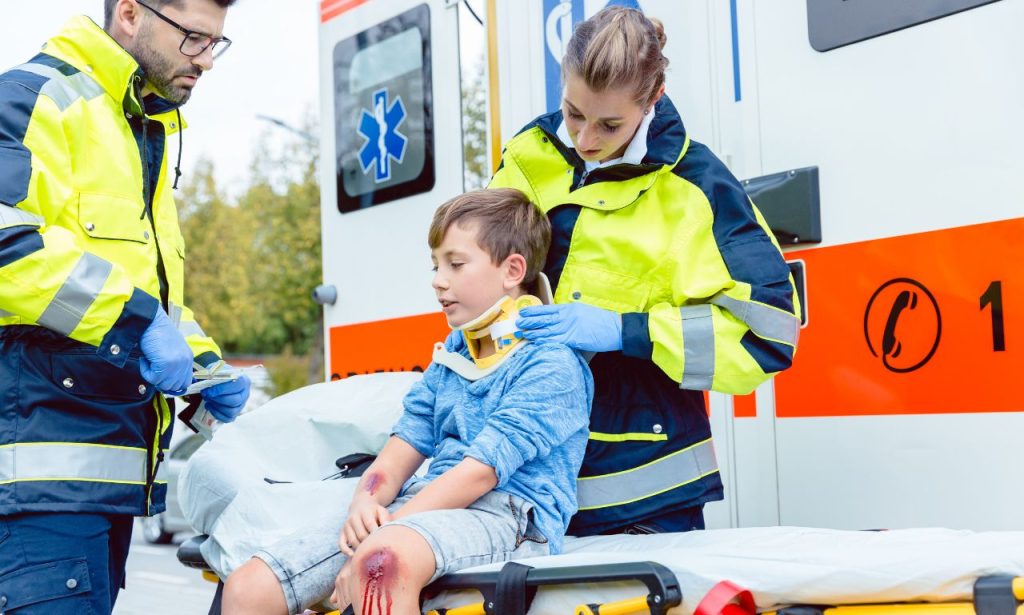In the modern educational environment, the safety and security of students, staff, and visitors have become a top priority. Schools are no longer just places of learning but also sanctuaries where the well-being of everyone involved must be safeguarded. This article delves deep into the concept of “what is a code blue in school,” exploring its significance, procedures, and the roles of various responders during such emergencies.
What You Need to Know about Emergency Response Procedures in Public Schools
Public schools have established emergency response procedures to handle various crises ranging from natural disasters to medical emergencies. These procedures are meticulously designed to minimize chaos and ensure swift action. Among these procedures, code blue is one of the most critical, often indicating a medical emergency that requires immediate attention.
Blue Code: Is it a Real Emergency?
A code blue in a school setting signifies a severe medical emergency, typically involving a life-threatening situation where someone’s breathing or heart has stopped. Unlike other codes that may signal potential threats or need for sheltering in place, a code blue demands urgent medical intervention.
Safety and Security
The safety and security protocols in schools are multifaceted, encompassing a variety of potential emergencies. These protocols include:
Medical Emergencies

Medical emergencies in schools can range from minor injuries to severe health crises such as cardiac arrest. Code blue is specifically reserved for the latter, where immediate resuscitative efforts are critical. The rapid identification and response to a code blue can mean the difference between life and death.
Shelter in Place
Sheltering in place is a procedure used during external threats that make evacuation dangerous. This can include severe weather, chemical spills, or other hazards. While sheltering in place is about keeping individuals safe within the school, a code blue requires mobilizing medical response teams to the scene of the emergency.
Procedures
Schools often use color-coded systems to communicate different types of emergencies. These systems ensure clarity and quick response without causing panic. Code blue is part of this system, emphasizing the need for immediate medical attention.
Keep It Simple
Emergency procedures, including those for a code blue, are designed to be straightforward. Simplicity ensures that everyone, from students to staff, understands their role and can act quickly. Complex procedures can lead to confusion and delays, which are detrimental in medical emergencies.
Train the Staff
Regular training for staff is crucial. Staff members must be familiar with code blue procedures, know how to use medical equipment such as defibrillators, and be able to perform basic life support. Training sessions, often conducted annually, keep these skills fresh.
Practice, Practice, Practice
Drills are essential for ensuring preparedness. Schools conduct regular drills for various emergencies, including code blue scenarios. These practice sessions help identify any gaps in the procedures and ensure that everyone is ready to respond effectively.
What Are the Roles in a Code Blue?
During a code blue, clearly defined roles ensure a coordinated response. Key roles include:
First Responder (CPR)

The first responder is often the person closest to the victim when the emergency occurs. Their primary responsibility is to start CPR immediately to maintain circulation and breathing until more advanced help arrives.
Airway Manager
The airway manager ensures that the victim’s airway remains open and clear, providing ventilation if necessary. This role is crucial because, without a clear airway, CPR efforts can be futile.
Defibrillator Operator
The defibrillator operator is responsible for using the automated external defibrillator (AED) to deliver shocks to the victim’s heart if needed. This role requires specific training to ensure the device is used correctly and effectively.
Conclusion
Understanding “what is a code blue in school” is essential for ensuring the safety and well-being of students and staff. By having clear procedures, well-trained staff, and regular practice drills, schools can be prepared to handle medical emergencies swiftly and effectively. The roles of first responders, airway managers, and defibrillator operators are critical in ensuring a coordinated and life-saving response.
ALSO READ: Careers in Dermatology Without Med School
FAQs
A: A code blue in a school signifies a severe medical emergency, such as cardiac arrest, requiring immediate medical intervention.
A: Schools should conduct code blue drills regularly, at least annually, to ensure preparedness and identify any procedural gaps.
A: Staff should be trained in CPR, the use of AEDs, and basic life support. Regular refresher courses are also recommended.
A: Yes, involving students in code blue drills can help them understand the importance of such procedures and how they can assist in an emergency.
A: The primary goal during a code blue is to provide immediate life-saving measures to the victim until professional medical help arrives.





